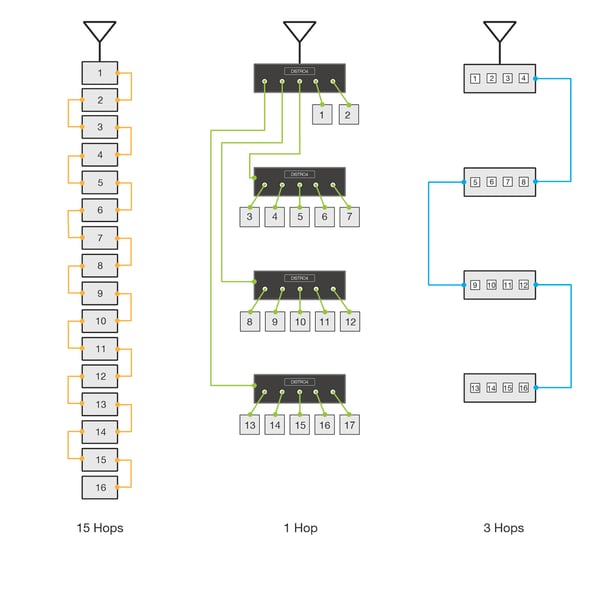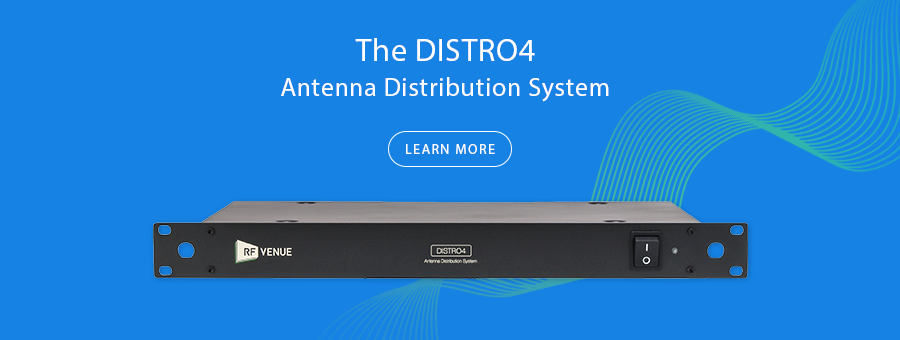Combining Distros Part 2 : Cascading multi channel receivers
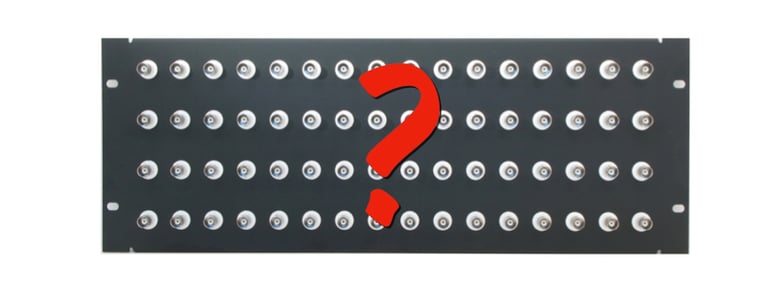
In part one this this article we discussed combining distros and cascading distros and the difference between the two. We received a number of questions that pointed to the fact that many users are unsure how to proceed when using dual or quad channel receiver systems. In addition, a number of digital receivers have cascade or pass through ports which allow for connecting multiple receivers (single, dual or quad) together. So how does that work?
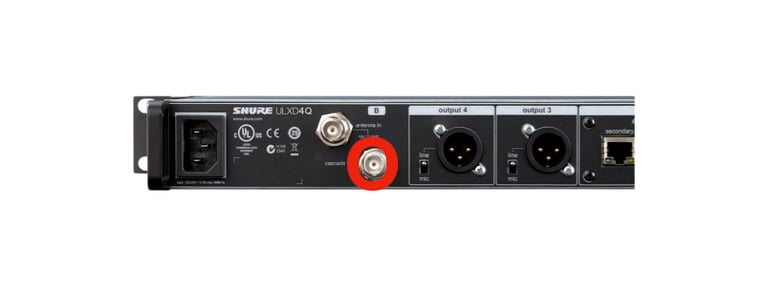
Let’s cover multiple systems first. Nearly all the major manufacturers these days offer dual and 4 channel receivers built into a single 1U chassis. These systems include a built-in distribution system so that all receivers in the box (2 or 4) share the single antenna A&B inputs. Effectively they have their own distro already inside the box. For all practical purposes you simply treat these as if they were single receivers as far as hooking them up to an antenna distro. But some further confusion may occur if your quad or dual unit has a cascade output.
The diagram below shows three possible ways to connect 16 receivers that have cascade outputs. The left most diagram uses cascade outputs of the receiver, the middle uses a Distro4 to connect quad units and the right hand side cascades three quad receivers. All three methods could work depending on your exact situation which is usually gated by the noise floor at your venue.
But as you can see... each time you cascade you are sending your signal through an amplifier and splitter which results in some amount of distortion to the signal and a small increase in the noise floor. And while it is true that noise and distortion don't affect digital wireless systems in the same way they do with analog systems, cascading will cause some rounding off of the digital code pulses. At some point excessive corruption to the signal will cause the receiver to not be able to understand the digital code. Shure recommends using only one cascade hop for their UXLD dual and quad units. Could you use more? In some cases yes and some no, but either way your reliability level will suffer.
Connecting single channel units that have cascade outputs offer many ways to connect them. Shown here is a simple unit to unit cascade. Using this method would mean the last unit in the chain would receive a signal that has hopped 15 times. You could alternately use the distro to connect up five receivers and then cascade once or twice. Again, it may work fine ... today. But should anything change in the future you may end up off the air.
Simply stated, the fewer hops, the more integrity the RF signal will have when it reaches your receivers. Since typically cascading units is a serial connection you also face the possibility that if the chain fails all the succeeding units will not receive signal. Think of old fashioned Christmas tree lights, one goes out and you lose the chain.
Don Boomer
Don Boomer is Senior applications engineer at RF Venue. He has worked in R&D in the past for Peavey, Sabine and Line 6 and his rock band from his high school days has a song in the Rock n Roll Hall of Fame
More from the blog
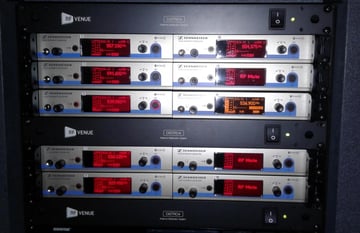
Combining Multiple Distros for best performance
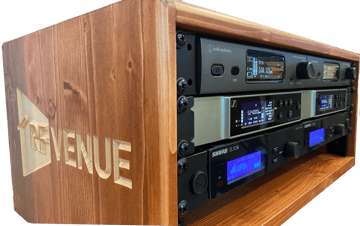
Debunking Analog vs. "Digital Wireless" Microphones
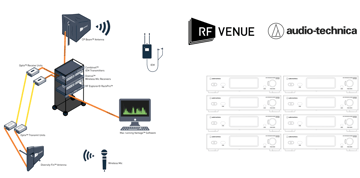
Audio-Technica to Help Distribute RF Venue Wireless System Accessories in North America
Subscribe to email updates
Stay up-to-date on what's happening at this blog and get additional content about the benefits of subscribing.

